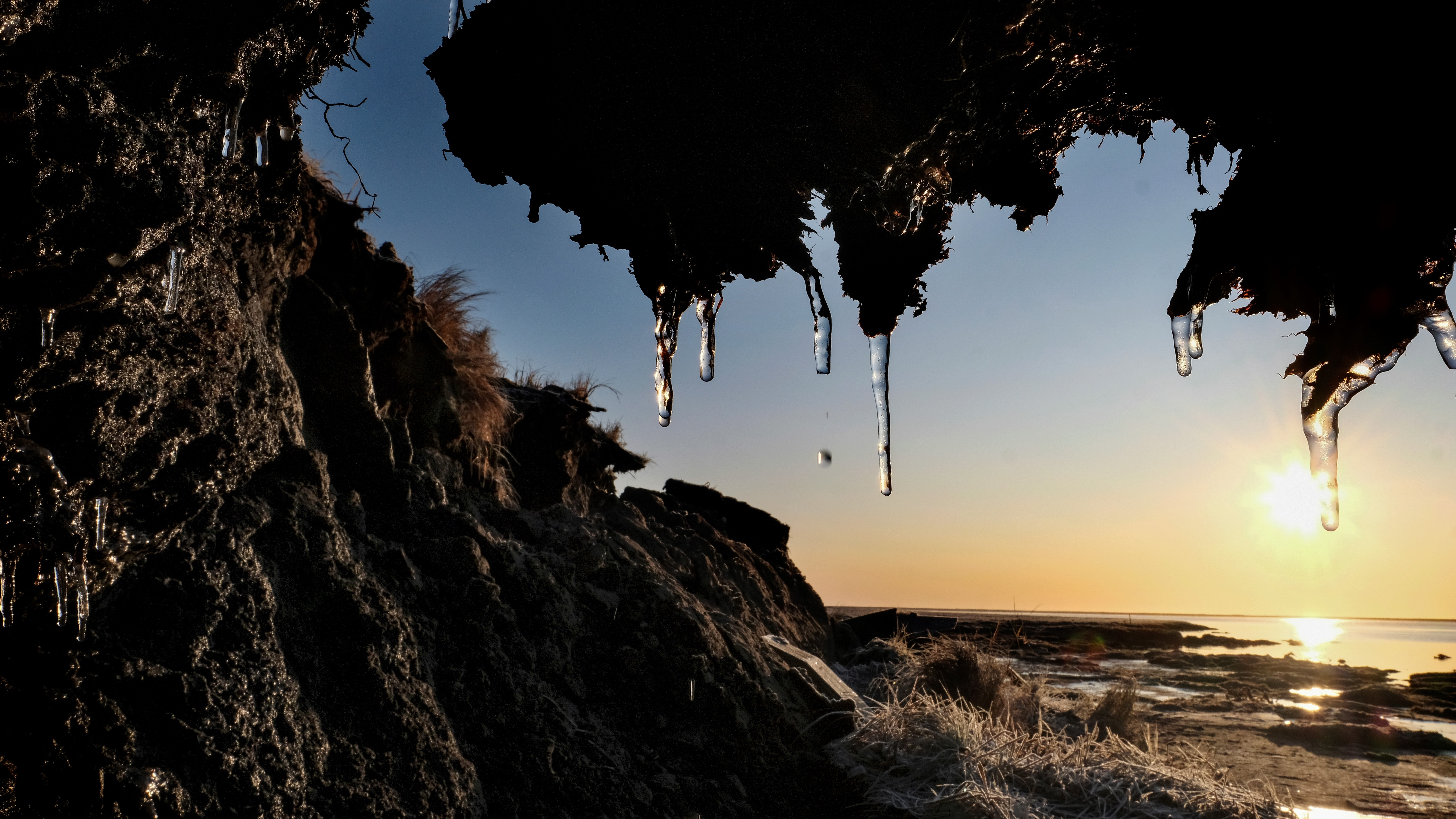'Black swan' pathogens from ancient permafrost may be getting ready to wake up
Scientists simulated ancient viruses to see what impact they would have on the environment. While most had few consequences, 1% were capable of killing their hosts and disrupting ecosystems.
Ancient pathogens that have been locked away for hundreds of thousands of years are starting to emerge from permafrost as climate change takes hold — and around 1% of these could pose a substantial risk to modern ecosystems, a study has found.
"It is the first attempt to try modeling the potential ecological effect of these kinds of time-traveling invaders from a quantitative perspective," Giovanni Strona, a professor of ecological data sciences at the University of Helsinki and co-author of the study, told Live Science.
Permafrost is a mixture of soil, gravel and sand bound together by ice. It is found either on or beneath Earth’s surface in regions of the Arctic, including parts of Alaska, Greenland, Russia, China and Northern and Eastern Europe. When permafrost forms, microbes like bacteria and viruses can get trapped inside it and can survive in a state of suspended animation for thousands or even millions of years. Warmer periods can kickstart metabolic processes that allow these dormant microbes to reactivate and reproduce.
Amid global warming, some of these microbes, including those with the potential to cause disease, are being released as the permafrost thaws. In 2016, an anthrax outbreak in Siberia killed thousands of reindeer and affected dozens of people, which scientists attributed to melting permafrost.
Related: Nematode resurrected from Siberian permafrost lay dormant for 46,000 years
These pathogens pose a potential risk because humans and other living organisms alive today have not been exposed to them for so long — meaning modern ecosystems may have few defenses against them.
"If pathogens have been living alongside bacterial, human or animal communities for a long time, you can expect some co-evolution between the pathogens and the local community, which reduces the risk that pathogens pose to ecosystems," said Strona. "But when you have a time-traveling invader, you clearly have the introduction of novel elements of risk."
Get the world’s most fascinating discoveries delivered straight to your inbox.
To estimate how re-emerging pathogens might impact modern ecosystems, Strona and his team digitally simulated the evolution of virus-like pathogens that were able to infect and cause disease in bacteria-like hosts.
In the simulation, digital microbes had to compete for resources, mimicking what happens in the real world. Some of the viruses infected and killed a fraction of the bacteria-like hosts, while other bacterial hosts developed immunity against the evolving pathogens.
By "infecting" 5% of the modern bacteria-like hosts — that had evolved in more recent generations — with ancient virus-like pathogens from much earlier generations, the team found that 1% of viral pathogens could substantially disrupt more recently evolved bacterial communities.
Some of the viral invaders caused 32% of the bacteria-like species to die out, while others caused the diversity of bacteria-like species to increase by up to 12%.
The team dubbed the 1% pathogens "black swans" — referring to a rare and unlikely, but hugely impactful event. They argued that, while the probability of them emerging and wreaking havoc is low, their impact would be catastrophic, so they should be considered in future climate scenarios.
“As a society, we need to understand the potential risk posed by these ancient microbes so we can prepare for any unintended consequences of their release into the modern world," co-author Corey Bradshaw, from Australia's Flinders University, said in a statement. "The results tell us that the risk is no longer simply a fantasy that we shouldn’t be prepared to defend against.”
The impact of these pathogens could even reach the human population, Strona said. This could occur when humans make direct contact with pathogens from the permafrost, or when people catch diseases from animals infected with ancient pathogens, he said.
However, he added that the study is entirely based on computer simulations that model how viruses infect bacteria, so further research is needed to clarify the actual risks posed to animals and humans in the real world.
The findings were published July 27 in the journal PLOS Computational Biology.

Carissa Wong is a freelance reporter who holds a PhD in cancer immunology from Cardiff University, in collaboration with the University of Bristol. She was formerly a staff writer at New Scientist magazine covering health, environment, technology, nature and ancient life, and has also written for MailOnline.




